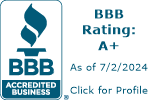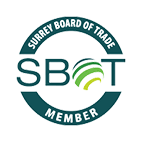“Can I just invest my way into Canadian permanent residency?” It’s a question I hear almost every week at ELAAR Immigration.
The short answer is that Canada doesn’t work that way.
Unlike some countries that offer direct “golden visa” programs, Canada offers several business immigration options that fall into two distinct categories:
- Business PR Programs – designed for entrepreneurs whose primary goal is permanent residency from day one.
- Business Work Permits – temporary permits that let you establish and operate a business first, which can later be leveraged to apply for PR via federal or provincial pathways.
What both paths have in common is active business operation and meeting strict program criteria. You can’t simply write a cheque and receive Canadian permanent residency.
Let me walk you through both options so you can understand which path aligns with your goals.
Business PR Programs: Direct Pathway to Permanent Residency
These programs are designed to help you get direct permanent residency (PR). You don’t need to hold a temporary work permit first, although some Provincial Nominee Program (PNP) entrepreneur streams may include a short-term work permit stage for business setup. Almost every business PR program now has a work permit option; however, it is not mandatory.
For PNP entrepreneur streams, they have a mandatory work permit stage so that the applicant can invest in the business venture and meet the business compliances agreed with the province at the application stage.
Start-Up Visa (SUV) Program
The Start-Up Visa is Canada’s flagship program for innovative entrepreneurs who can create jobs and compete globally.
You must have a qualifying business idea, secure a letter of support from a designated organization (venture capital fund, angel investor group, or business incubator), meet language requirements, and have sufficient settlement funds.
Key requirement: Your business must be innovative, create jobs for Canadians, and have the potential to compete internationally.
Important note: Applicants wishing to settle in Quebec cannot apply through this program.
One client from Bangalore, India, a fintech entrepreneur, told me: “I thought the designated organization requirement would be impossible, but once I understood what they were looking for, the process became much clearer.”
Learn more: From Startup Visa to Permanent Residency in Canada
Self-Employed Persons Program
The Self-Employed Persons Program targets cultural, artistic, or athletic professionals with relevant experience who can make a significant contribution to Canada’s cultural or athletic life.
Artists, musicians, writers, coaches, fitness instructors, and other cultural or athletic professionals who have been self-employed in their field usually choose this program.
However, this program is currently paused until January 2027 for new applications.
Certain Provincial Nominee Entrepreneur Streams
Some provinces allow direct PR nomination after the business application approval. However, for most PNP entrepreneur streams, a mandatory work permit stage is in place to ensure the business venture is actively operated and compliant with provincial requirements.
This work permit stage was introduced because immigration departments observed cases where applicants approved directly for PR did not start the business venture as required.
After meeting all business compliance requirements as part of the provincial nomination process, the next stage is to apply directly for PR with IRCC.
Exception: Alberta Graduate Entrepreneur Stream
For international graduates of Alberta institutions on a valid Post-Graduation Work Permit (PGWP), Alberta issues a nomination certificate after submitting the business application. These nominees must keep operating the business while PR is processed. This program does not have an additional work permit stage but requires holding a valid PGWP and is not a route for offshore entrepreneurs.
If your question is about classic entrepreneur immigration from abroad, there is no PNP that skips the work-permit/operate-the-business phase and nominates you straight for PR. The Alberta graduate stream is a very specific exception with limited eligibility.
Business Work Permits: Indirect Pathways to Permanent Residency (PR)
These are temporary resident pathways that allow you to come to Canada to start or buy a business. They’re not PR programs themselves, but successful business operations can open doors to permanent residency through PNP nomination or federal skilled worker programs.
C11 Entrepreneur Work Permit
The C11 Work Permit (popularly known as the Entrepreneur Work Permit) is designed for entrepreneurs who can demonstrate “significant benefit” to Canada through their business activities.
You apply under the International Mobility Program (IMP) for an LMIA-exempt work permit, showing that your proposed business will deliver economic, social, or cultural value to Canada. This permit is ideal for:
- Seasonal, self-employed professionals
- Solo entrepreneurs with majority ownership
- Applicants with a clear, temporary business timeline
Timeline to PR: After 12-24 months of active business operation, you may apply for PNP nomination or qualify under federal programs like Canadian Experience Class (CEC) or Federal Skilled Worker (FSW).
This work permit can help reach PR, but it is not a guarantee for everyone. The eligibility depends on credentials and program criteria.
C11 is for temporary, usually seasonal, self-employed activities. Think short-term gigs, not permanent business setups.
You’re expected to:
- Own and operate the business yourself
- Rarely hire outside your family
- Control 50%+ of the business
- Show significant benefit to Canada (cultural, social, or economic)
C10 Significant Benefit Work Permit
The C10 Work Permit refers to IRPR R205(a), LMIA exemption code C10, which allows the issuance of a work permit to foreign nationals whose employment is expected to provide significant economic, social, or cultural benefit to Canada.
It is for individuals who can demonstrate a significant cultural, social, or economic benefit to Canada that doesn’t fit into other work permit categories. The C10 is used for unique situations where traditional work permit categories don’t apply.
Last year, I worked with a tech entrepreneur from Dubai who wanted to establish an e-commerce platform in Canada. His first instinct was to set up in Toronto with a $400,000 investment. I had to explain why that approach would likely fail.
The C10 isn’t about how much money you have; it’s about solving problems that Canadians actually face.
Core Concept of C10 Work Permit
The core legal test is whether the applicant’s proposed activity in Canada offers a clear, measurable benefit to the Canadian public or economy. This could include creating skilled jobs, preserving essential services in remote communities, offering culturally significant programming, or launching innovative businesses that address market gaps.
Location matters
Opening another coffee shop in downtown Vancouver won’t impress anyone. But that same coffee shop in a town where the nearest competitor is an hour away? That’s addressing a genuine need.
Main Success Factor
The key to success is to view the business as a solution to a real need in Canada. It should not be seen just as an investment.
Regional context is important. Opening a coffee shop in urban Vancouver may not stand out. Starting a business in a town with limited medical services can be impactful. It could also be a social enterprise that creates local jobs. This approach could make a significant difference.
A common mistake is to assume that simply investing a large amount of money qualifies. A tech entrepreneur from Dubai suggested a $400,000 investment in a general e-commerce platform in downtown Toronto. The proposal had a large investment, but it was not unique or beneficial to the public. Therefore, it would likely fail under C10 criteria.
In contrast, a successful C10 application involved a Singaporean entrepreneur who opened a hybrid-electric automotive repair shop in a remote Yukon community. With just $120,000 in capital, he filled an important service gap. He became the only certified shop for hybrid vehicles within 80 kilometers. This shows a clear economic benefit for the local area.
LMIA Pathway for Business Owners
The LMIA pathway for business owners also referred as New Owner Operator LMIA is a route that allows foreign nationals who own or control a Canadian business to apply for a work permit.
In this process, you are essentially applying to hire yourself, which involves completing the standard Labour Market Impact Assessment (LMIA). This pathway is designed for:
- Foreign entrepreneurs who own or plan to buy a Canadian business
- Business owners who want to actively manage operations in Canada
- Individuals who can demonstrate specialized skills not readily available in the Canadian labour market
To qualify, you must:
- Own or control the Canadian business
- Ensure the business is active or has concrete launch plans
- Demonstrate that the business can afford your salary
- Provide financial documentation showing viability
- Conduct recruitment efforts and show that no Canadians are available for your role
Where it fails: Generic management positions for common business types. Trying to argue that no Canadian can manage a convenience store, coffee shop, or basic retail operation won’t work unless you have highly specialized industry experience.
Case Study
Consider the example of a South Korean entrepreneur with a thriving restaurant chain who wanted to expand to Vancouver. At first, he assumed he could simply apply for a work permit as the owner. But Canada has phased out the “Owner-Operator LMIA” pathway, which means business owners now face far stricter requirements.
In this case, the strategy showed the applicant’s special skills. These skills were advanced cooking techniques from Korean cuisine. The applicant backed this up with training credentials and a menu that needed his direct involvement. It wasn’t a quick process: nearly eight months of careful preparation and extensive documentation were required. But with the right positioning, the application was approved.
Intra-Company Transfer (ICT)
Three months ago, a manufacturing company owner from Germany contacted me about expanding into Canada. He had a solid business with 45 employees and €8 million in annual revenue. Perfect ICT candidate, I thought.
Then I spoke with another entrepreneur from India last week – great guy, but he ran a small consulting firm with 3 employees and $80,000 in revenue. He’d heard about ICT and thought it was his ticket to Canada.
One got approved. Guess which one.
What ICT actually is: This program allows qualifying businesses to transfer key staff between their overseas operations and Canadian entities. If you don’t have a Canadian entity yet, you can use ICT to come establish a branch, subsidiary, or affiliate.
The three categories (important code changes):
- C61: Employees starting a branch or affiliate in Canada (highest scrutiny)
- C62: Executives, senior managers, or functional managers
- C63: Specialized knowledge staff
ICT applications are approved or rejected based on the company’s strength, not the individual applicant’s qualifications.
Read more: Intra-Company Transfer Rejection Reasons
What makes a qualifying overseas business:
- Financial strength: Assets and retained earnings that justify Canadian investment
- Company funding: Investment must come from the business, not personal funds
- Operational depth: Enough managers and executives to run things while you’re in Canada
- Continued operations: Your overseas business must keep running the entire time
- Matching ownership: Same controlling ownership structure in both countries
- Your employment history: At least 12 months with the overseas entity in the past 3 years (with proof of payments, dividends, etc.)
Red flag scenarios I see constantly:
- Small grocery stores, convenience stores, or coffee shops
- Annual revenues under $150,000
- Fewer than 5 employees
- Low yearly profits
The German manufacturer I mentioned? His company had the financial strength, operational depth, and clear business case for Canadian expansion. His ICT was approved in 8 weeks.
The Indian consultant? I had to explain that his business model wouldn’t qualify. We explored other options instead.
The key question I ask every potential ICT client: “If you were investing in someone else’s business expansion into Canada, would your overseas company’s financials give you confidence?” If the answer is no, ICT isn’t your path.
An important additional point is that ICT now requires your company to be truly multinational, meaning it must already be operating in a minimum of two countries before expanding into Canada. This ensures the business has the necessary financial strength, operational depth, and international presence for Canadian immigration eligibility under the ICT program.
Do You Want to Move to Canada as a US-Based Doctor?
Immigrate to Canada with the help of our Licensed Experts.
Choosing the Right Path for Your Situation
The decision between Business PR Programs and Business Work Permits depends on your specific circumstances and risk tolerance.
Choose Business PR Programs if:
- Permanent residency is your immediate priority
- You have an innovative business idea (for SUV)
- You’re comfortable with higher upfront requirements
- You want certainty about your immigration outcome before moving
Choose Business Work Permits if:
- You want to test the Canadian market first
- You prefer to establish business success before committing to PR
- You need more flexibility in your business model
- You want to build Canadian experience and connections
What Canada Does NOT Offer
Let me be crystal clear about this because misconceptions are common:
Canada has no “golden visa” or “citizenship-by-investment” program. You cannot simply invest a large sum of money and receive permanent residency or citizenship.
Every business immigration route requires:
- Active involvement in establishing and operating a business
- Meeting specific job creation targets
- Demonstrating genuine business activity
- Satisfying immigration program requirements
Even the wealthiest investors must roll up their sleeves and actively manage their Canadian ventures.
Sample PR Transition Flow for Work Permit Routes
Here’s how the typical progression works for business work permit holders:
- Obtain Business Work Permit (C11, ICT, or LMIA-supported)
- Establish and Operate Business (12–24 months minimum)
- Meet Business Targets (job creation, revenue thresholds, etc.)
- Apply for PNP Nomination or qualify for federal programs
- Submit PR Application through the nominated stream or Express Entry
- Receive Permanent Residency
The entire process typically takes 2–4 years from initial work permit to landing as a permanent resident.
Do You Want to Move to Canada as a US-Based Doctor?
Immigrate to Canada with the help of our Licensed Experts.
Can you buy Canadian permanent residence?
No. Canada does not offer any program where you can directly purchase permanent residency. All business immigration routes require active business establishment, operation, and meeting specific program criteria.
Do I have to run a business in Canada to qualify?
For business immigration programs, yes. You must either start a new business or acquire and actively manage an existing Canadian business. The level of involvement varies by program, but passive investment alone is never sufficient.
Which provinces are best for business immigration?
It depends on your industry, business model, and personal preferences. British Columbia and Ontario are popular for tech entrepreneurs, while the Prairie provinces often offer more accessible thresholds for traditional businesses. Each province has different requirements, so research specific PNP criteria for your situation.
How long does the entire process take?
For direct PR programs like Start-Up Visa: 24–48 months from application to landing. For work permit routes: 2–4 years total (including business establishment period).
What happens if my business fails?
This is a critical consideration. For work permit routes, business failure could jeopardize your ability to renew your permit or qualify for PR. For direct PR programs like SUV, you generally maintain your status even if the business doesn’t succeed, but you must have made genuine efforts to operate the business.
Important Considerations Before You Begin
There is no Fast-Track PR Program
Even with easier processes in some areas, starting a business and getting permanent residency takes time. The quickest options usually need 12 to 24 months of planning and running the business.
Research is the Key Success Factor
Before moving forward:
- Verify current program requirements (they change frequently)
- Understand the specific business requirements for your target province
- Connect with other entrepreneurs who’ve used similar pathways
- Ensure your business model aligns with program expectations
Consider Your Personal Factors
The most successful business immigrants typically have:
- Sufficient capital for both business investment and personal support
- Realistic expectations about the Canadian business environment
- Clear understanding of their target market
- Backup plans if initial business strategies need adjustment
That said, for those willing to take this path seriously, Canada offers some of the world’s most accessible business immigration opportunities. The country genuinely wants entrepreneurial talent, and the pathways exist to make it happen.
The key is choosing the right route for your specific situation and having realistic expectations about the timeline and requirements.
Strategic Steps Towards Investment Immigration
If you’re considering investment immigration to Canada, start by:
- Assessing which category (direct PR vs. work permit route) aligns with your goals
- Researching specific program requirements for your target province
- Connecting with experienced immigration professionals who understand business programs
- Developing a realistic timeline and financial plan
Remember: every situation is unique, and immigration requirements change regularly. What worked for one entrepreneur may not be the best approach for another.
Take Professional Guidance from Licensed Consultants
Navigating business immigration requirements can be complex, and having experienced guidance makes all the difference. At ELAAR Immigration, our licensed experts have helped many entrepreneurs successfully establish businesses and obtain permanent residency in Canada.
Contact our team today for a personalized consultation and take the first step toward your Canadian entrepreneurial journey.










